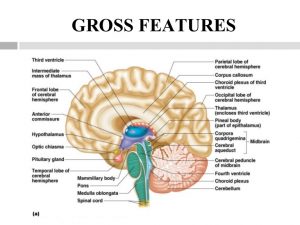We used to think beauty was in the eye of the beholder. We attribute so much of our sighted world to the complex workings of the eyes.They eyes are a most remarkable part of the brain. 
Yes, the eyes are technically brain matter with pre-ganglionic cells in the retina that have neurotransmitter signaling just like the rest of the brain. Embryologically, they are derived from the diencephalon which gives rise to mid-brain structures like the hypothalamus, thalamus, and pineal gland. So if we think about it, our eyes are direct extensions of the brain.
Even if the eyes work perfectly, if the parts of the brain like the thalamus and primary visual cortex which receive the information are not working perfectly, then we can experience functional blindness. We need other areas of the brain to interpret the signals from the eyes in order to perceive that we are seeing anything.
The flow looks something like this:
the eyes receive information about light and shadow contrasts –> signals move through the thalamus which is the central relay station –> information moves to the back of the brain to the primary visual cortex in the occipital lobe where it gets consolidated into a categorical representation of an object –> information then moves in two different streams back towards the front of the brain for our ability to declare WHAT we’ve seen and WHERE we’ve seen that in relation to our selves and space.
Without the brain’s ability to send signals to their WHAT and WHERE destinations, we will not have a sense of actual vision. So when we perceive beauty and familiar faces, or become overwhelmed with awe-inspiring landscapes and appreciation for art this is a sense of vision being created from inside the mind, by the mind! Add to this that the brain uses old experiences as the prediction scripts for what we expect to see and experience we begin to realize that what we interpret as sight is also a function of our expectations and past experiences.
Due to the gifts of our neuroplastic brain, we are now able to train ourselves to actually see better.
Being able to see better is something that you kind of have to trick your brain into doing, so as Seitz attests, it’s not making the eyes work better, it’s making the brain work better ~ Read full article in SharpBrains
If you’re not seeing the beauty in the world, and if you can’t recognize the gifts right in front of you, perhaps a little brain training will expand your field of vision.
What more could you see if you believed first that beauty was all around you?
~~~
Listen to Founder Lisa Wimberger discuss the video companion series to her new book, Neurosculpting
~~~

